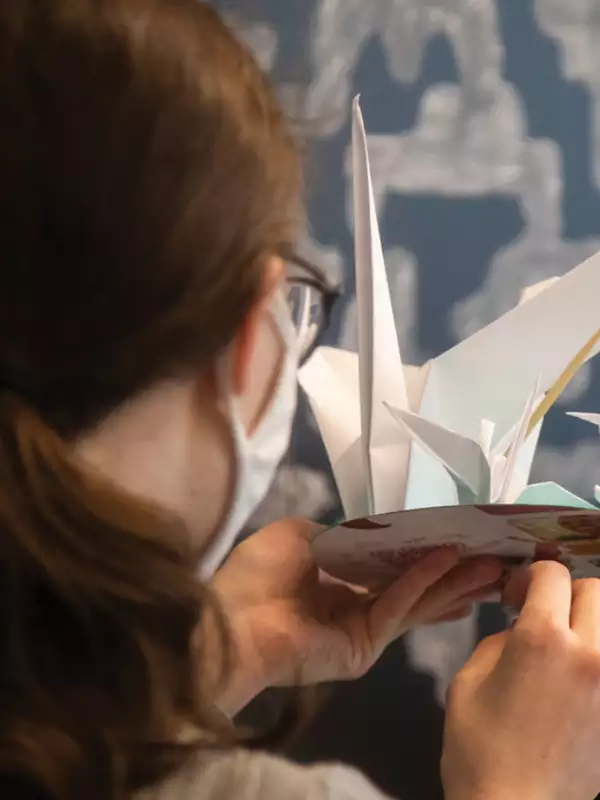
With the Women in Agency Festival, La Femme Theatre Productions founder Jean Lichty ’81 gives recent Barnard grads a powerful platform for original work

Technology is an effective tool in navigating everyday life, of course, but it can also be used in myriad inventive ways. Last spring, assistant professor of computer science Mark Santolucito asked 23 students in his Creative Embedded Systems course to conceive of and implement their own creative uses of computation by producing kinetic sculptures — sculptures that move.
To teach the class remotely, Santolucito employed every technique at his disposal, such as an overhead desk camera to show students the pieces he was discussing. Students who lived near campus had access to the College’s Design Center in the Milstein Center for Teaching and Learning, where they could use resources such as drills and 3D printers to make their projects a reality.
“Students were required to build and design from scratch a creative sculpture that connected to motors and the internet, so we can trigger all of these sculptures remotely at the same time,” says Santolucito. “I provided some high-level configuration constraints, such as telling them, ‘You need to use a particular programming style, you need to connect to this code that we already wrote for you.’ But from there, they were free to design and build however they liked.”
Producing a computer-powered sculpture that could be activated from a cell phone wasn’t without challenges. Students had to program and design an object that told a complete narrative. “The key benefit of this class was that it gave computer science students an opportunity to take ownership of creating artistic digital systems from the hardware to the software level,” explains Santolucito.
Students spent as many as 40 hours over three weeks on the sculptures. “I enjoyed exploring aspects of mechanical and electrical engineering that I don’t usually see as a computer science major,” says Pazit Schrecker ’21, whose Carousel for COVID Times sculpture consisted of two motors, an ESP32 (a Wi-Fi and Bluetooth chip), a Raspberry Pi (a tiny computer), regular paper, card stock, cardboard, origami paper, a Lego wheel, a Lazy Susan, string, and a number of wires. “I’ve been exposed to new types of problem-solving challenges and projects through this class, which helped me see how art and engineering can overlap and work together,” she says.
Yiyun Wang ’21, who made an automatic cat toy from her home in Wisconsin, says that facing limitations inspired her to expand her scope and collaborate with peers. “Since the problems we could encounter usually don’t have a standard answer key — how to design my device or how to make things interesting — it is helpful to learn from different perspectives,” says Wang, who plans to attend graduate school for computer science.
Once the sculptures were completed, local students displayed their work in the Department of Computer Science’s lounge in March. Similar to other assignments, Santolucito says, the project was open-ended to encourage students to think independently.
“It’s building a foundation for students to continue to learn through their entire life,” Santolucito says. “I don’t think you’re going to find any class at Barnard that is purely science or purely art. I think that’s the nature of what we do here — everything is interdisciplinary.”
The Creative Embedded Systems course was funded by a grant provided by the Global Columbia Collaboratory, jointly founded by the Data Science Institute and Columbia Entrepreneurship.